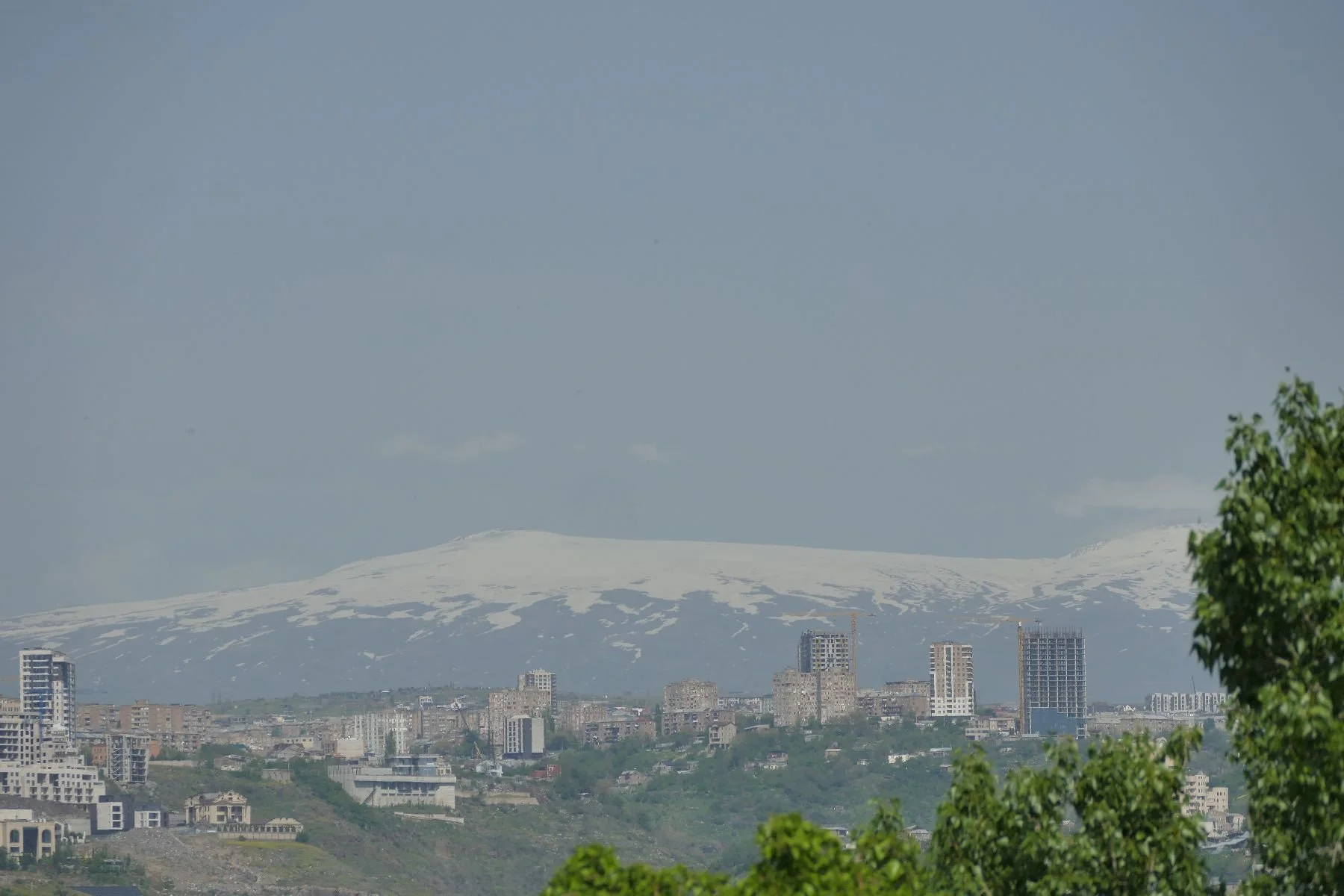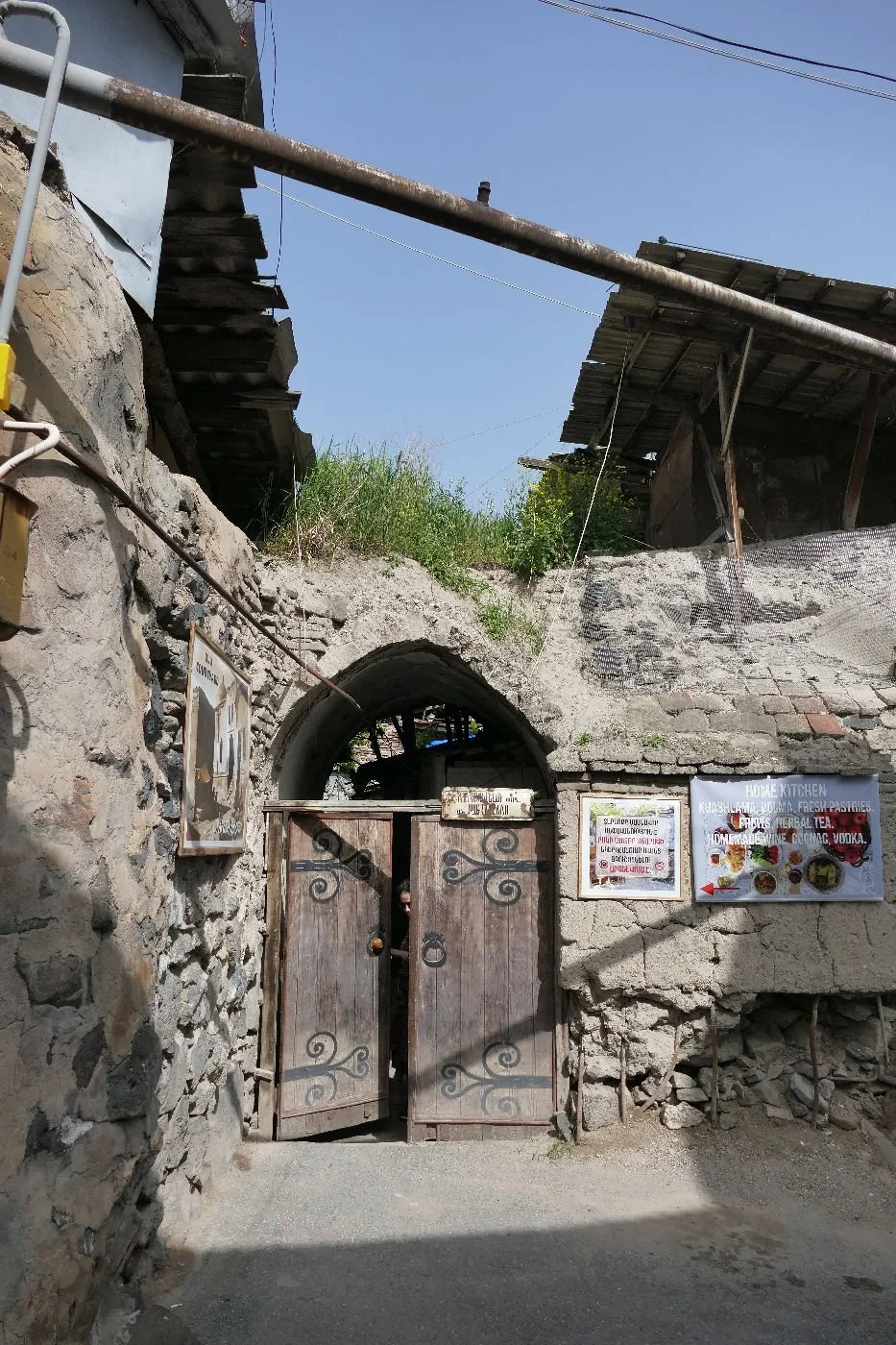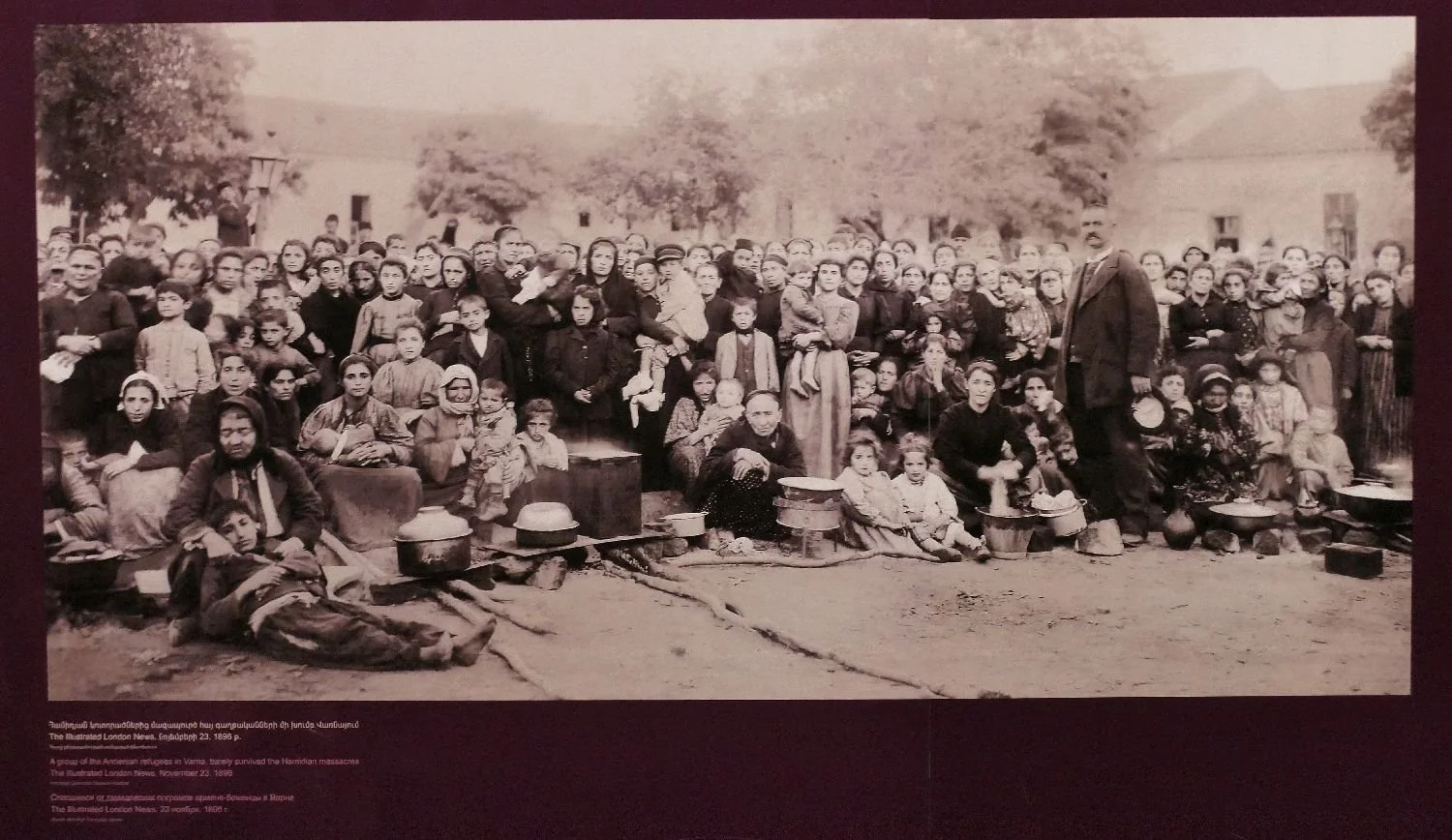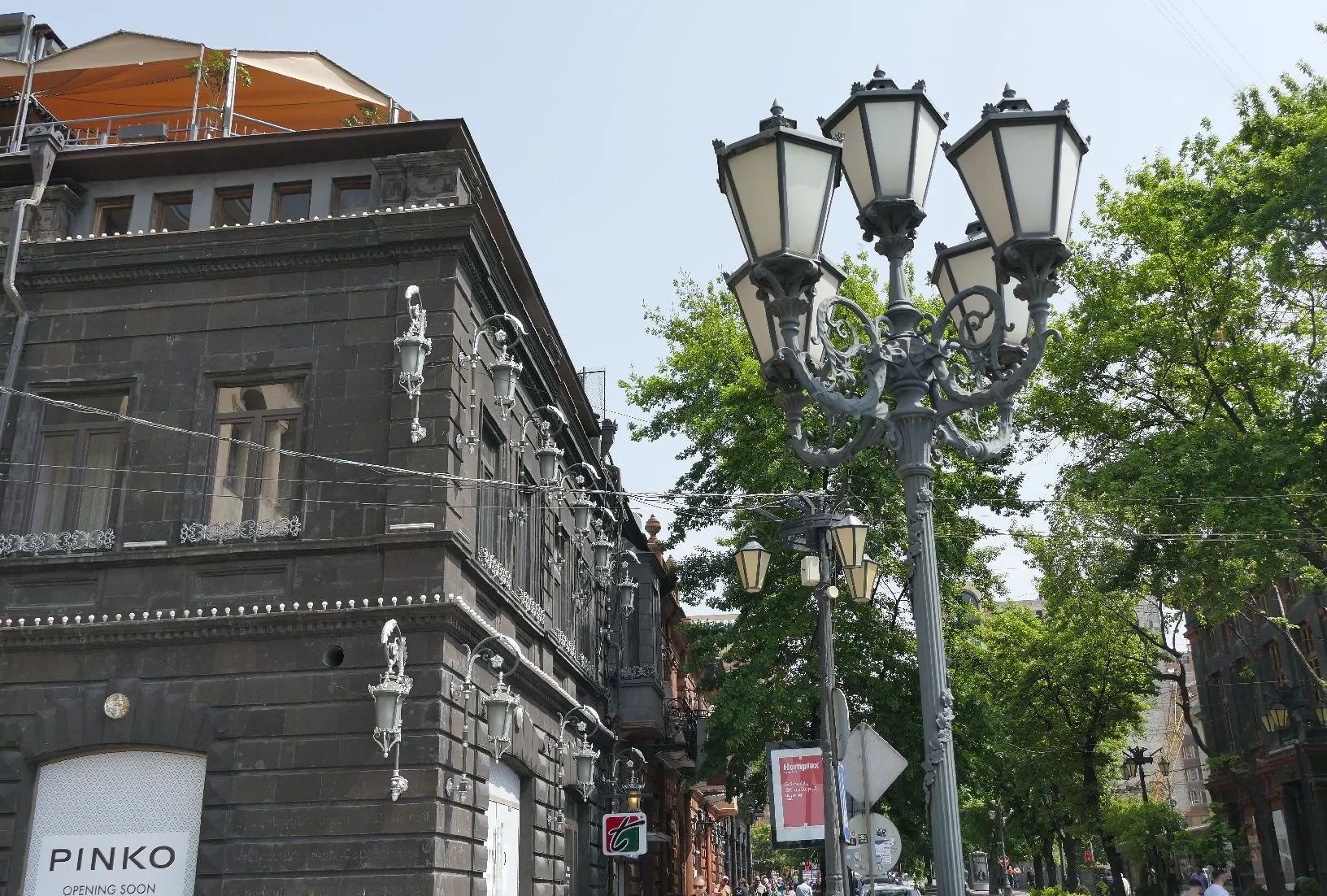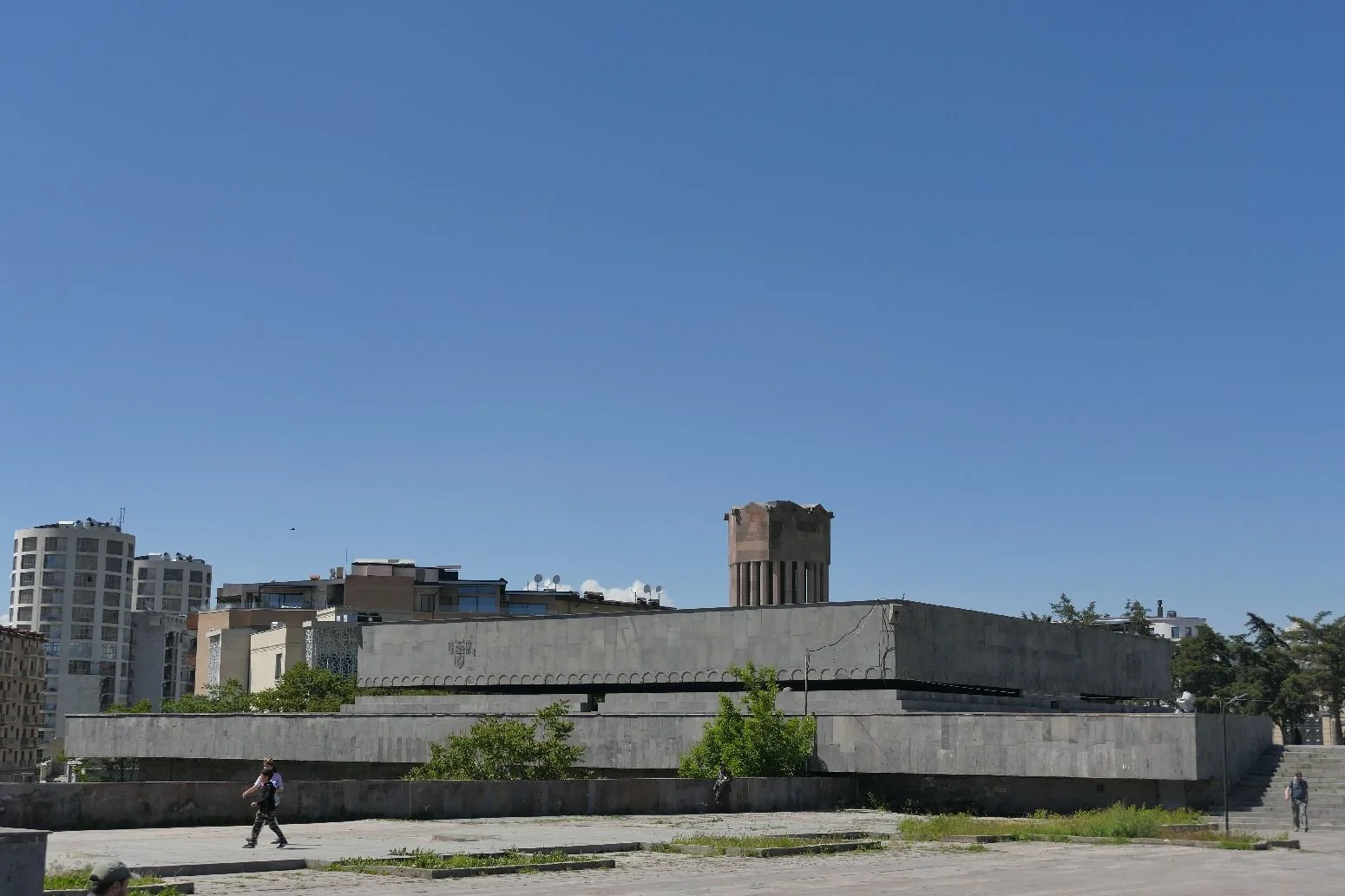Complex
How many readers correctly guessed the location of our last blog? The answer is:
Armenia
In early May, a very un-secret group of seven companions (including Terroir) spent some ‘super’ time travelling in Armenia. While walking up mountains and through flowery meadows, one of us is also embarrassed to report that a working title for an Armenian blog might be ‘How do you solve a problem like Armenia?’! (This E Blyton/Julie Andrews thing can be very infectious.) On return to the UK, however, we started collecting words which summed up our Armenian experiences and, thankfully, the word ‘problem’ never appeared in our list or in Terroir’s mind set. The only such word which one of us felt was an honest reflection of our visit was ‘complex’.
Here are those key words:
architecture, borders, diaspora, emigration, flowers, food, forests, funerary monuments, gas pipes, genocide, history, identity, ironwork, lakes, lavash, monasteries, mountains, Mount Ararat, neighbours, obsidian, pomegranates, stones (grey, pink, black, volcanic), sunlight through trees, walking trails, welcoming.
Apologies for the unfortunate but unintended collision of words beginning with ‘G’ in the strictly alphabetical listing above.
We will be exploring some of the stories behind these words in this and the following blog.
Let’s start with that travellers’ companion, the guide book. Perhaps unsurprisingly, guide books to Armenia are not as numerous as guides to, say, neighbouring Turkey. There is also a tendency to combine guides to Armenia with Georgia, to the north, and Azerbaijan to the east. There is a logic here: Armenia’s borders with Turkey and with Azerbaijan are closed, but you can travel to both countries via Georgia. We suspect, however, that a joint guide which includes Armenia’s fourth neighbour, Iran, doesn’t currently have much financial appeal to travel book publishers.
Our guide book of choice is the Bradt Guide to ‘Armenia & Nagorno Karabagh’. Where you may ask, is Norgorno-Karabagh? It was an ethnically Armenian enclave situated within south east Azerbaijan but, following the most recent Azerbaijan military offensive, almost the entire ethnically Armenian population has fled.
https://www.rome2rio.com/s/Nagorno-Karabakh/Armenia-Azerbaijan-border
Armenia’s relationship with Azerbaijan is, obviously, extremely complicated. The situation is fluid and it is impossible for guide books to provide accurate and up to date travel information. There is, technically, a road link between Nagorno-Karabagh and the Armenian border but, as we said, it’s complex.
Looking at the historical background to this whole region is not simple either. A staple of any guide book to anywhere, is a section on the history of the country in question. If you look at the combined Georgia/Armenia/Azerbaijan volumes, however, the history of Armenia is disappointingly short. Not so, in the more geograpically focussed Bradt Guide. There are twenty pages devoted to Armenian History (5% of the entire book) and it’s a tough read.
It goes something like this:
Armenians call their country Hayastan (the Land of Hayk). Legend has it that Hayk was one of Noah’s grandsons. So straight in with the huge significance of Mount Ararat.
Stone age: 600-800,000 years ago.
Agriculture: from about 6,000 BCE; carvings/petroglyphs, metal work.
The Urartu people arrived around 1,165 BCE, kicked off what was to become the Armenian language and founded an empire.
300 CE (approx): the first country to convert to Christianity ‘perhaps the single most important event in Armenian history’.
387 CE: Rome and Persia divi up the country between them, with restoration of Armenia monarchy in 884 CE
11th century: enter the Byzantine Empire.
Above: Exhibits from the Mashtots Matenadaran Collection of Ancient Manuscripts housed in a purpose built archive in Yerevan
1453: enter the Ottoman empire in the west, and Persians in the east.
1722: the Russians replace Persians, except in Nagorno Karabagh. There is a dispersal of population but eventually an Armenian dominated state is created in the Khanate of Yerevan.
Below: glimpses of Yerevan’s old town, based on its 17th C layout but with adaptions to accept modern amenities such as electricity and gas.
19th century and enter the British: Britain, France and the Ottoman Turks fight Russia in Crimea. Post war, Britain worries about Russian disruption of trade routes; control of Armenia is key.
Turkish and Russian dominance shuttles back and forth. Britain agrees to support Turkey in exchange for Cyprus and improved conditions for Armenian Christians. Britain gets Cyprus but drops Armenia like a hot brick. Thousands of Armenians emigrate.
Armenian Refugees 1896 Genocide Museum
WWI and Genocide: a weakened Ottoman Empire enters WWI on the side of the Germans. Russia and diaspora Armenians defeat the Ottomans who retaliate by demobilising the local Armenian troops and massacring them.
There follows an organised mass extermination of around 1.5 million local Armenians in what became the first genocide of the 20th century. It was recognised as such by the European Parliament in 1987 but, post Brexit, Britain has yet to recognise these 1915/16 atrocities as genocide.
Right: The Genocide Memorial In Yerevan
Below: images from the Genocide Museum
1917/1918: Russia tries, unsuccessfully, to unite Armenia, Georgia and Azerbaijan. After many Turkish and Russian attacks, the first Republic of Armenia is established in May 1918. The territories of Nagorno Karabagh and Nakhichevan (an exclave of Azerbaijan) are included for about a week.
Early 1920s: resurgence of intellectual and cultural life. Soviet architecture and town planning is established including the construction of Yerevan’s Republic Square (images below) and the State University. Private enterprise, churches and ordinary people were not so lucky.
1920: there is much scrapping over borders and political control, but Armenia is finally incorporated into the Transcaucasian Soviet Federated Socialist Republic in the November.
Above: Yerevan’s Republic Square. Architect Alexander Tamanyan - ‘among the finest of all Soviet ensembles’ (Bradt Guide)
Above: the green side of Soviet town planning
Below: the pink, the tuff and the ugly. Yerevan building stone is volcanic tuff and the city is famous for its pink and pinky-orange buildings. A few black basalt (also volcanic) buildings also creep in but for the everyday block of Soviet flats? Concrete of course.
WWII: Germany is distracted by the oilfields of Azerbaijan but around 630,000 Armenian soldiers fight for the Soviet Union with only half returning.
Above: Victory Park in Yerevan. Joeseph Stalin was the subject of the original statue but he was replaced in 1962 by this powerful rendering of Mother Armenia. Despite Stalin’s exit it was not thought appropriate to display an orthodox cross with his replacement; the position of Mother Armenia’s sword is, therefore, doubly symbolic for the people of Armenia.
Post war: Armenian nationalism is discouraged by the usual Soviet responses (secret police, Siberia etc). Relationships between Armenia and Azerbaijan become deeply inflamed over Nagorno Karabagh. Moscow imposes direct rule in 1989 and Azerbaijan closes its borders with Armenia.
1990 brings the third Republic: elections are won by the Armenian National Movement, Levon Ter-Petrosyan becomes president, Armenia secedes from the Soviet Union and in 1991, votes for independence - but also signs a mutual assistance treaty with Russia and others. Internal and external struggles continue with violence, corruption, political shenanigans and unfeasibly high turnouts at polling booths.
2018 and the Velvet Revolution: although 2009 negotiations with Turkey fail to reopen the border, internal desires for a better, fairer, less violent and more honest political system begin to grow, culminating in the elections of May 2018, later described as the bloodless or Velvet Revolution.
So there you have it: an illustrated history of Armenia in around 600 words compared with the Bradt Guidebook’s encyclopedic offering of around 3,700 words. Whichever you read, it still sounds complex.
Armenia today - in numbers:
Corruption Perception Index (https://www.transparency.org)
(O=terrible, 100=’clean’)
In 2018, Armenia scored 35. Just six years later, in 2024, Armenia scored 47 (the score peaked in 1920/21 at 49). Armenia ranks 58 out of 180 countries on the index. In comparison:
Denmark scores 90 and is top of the leader board
UK scores 71 (down from 82 in 2017) and ranks 11th
South Sudan ranks 180 out of 180 and has recently slipped 5 points to a score of 8 in 2024.
Gross Domestic Product (https://www.worldometers.info/)
Country Ranking Total GDP Per capita GDP
Armenia 112th $24.086 billion $8,183
Azerbaijan 82nd $72.356 billion $7,012
Turkey 18th $1.118 trillion $12,814
UK 6th $3.381 trillion $49,224
Armenia today - in pictures:
In many ways, modern Armenia suffers the same ills as much of the globe. Yeravan’s Cascade is a classic example of the problems of building a future out of the past.
The cascade was commenced during the soviet era as a limestone stairway/waterfall linking the hilltop monument (constructed to celebrate 50 years of Soviet rule) to downtown Yerevan at the bottom. Building was started in the 1980s but has been very stop/go ever since.
A post-Soviet injection of diaspora money (from the Cafesjian Family Foundation) has moved things on significantly and the Cafesjian Centre for the Arts opened in 2009. It’s a glorious spot, with the Tamyanman sculpture Park at the bottom (right and below). And escalators to help you up (except on Bank Holidays!).
Below: the sculpture Park at the bottom of the cascade
On the way up:
And at the top - just a tad more required to finish it off!
We’ll be back soon to explore more key words, but after that climb (yes, we went up on a bank holiday) its definitely time for an Armenian coffee and one of cosmopolitan Yerevan’s little treats.


